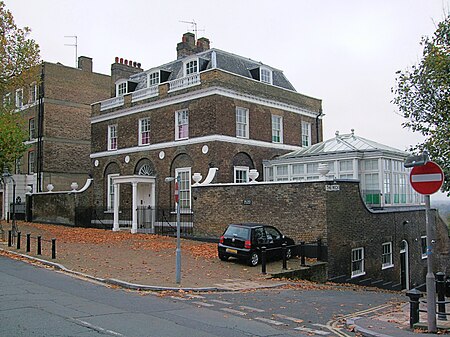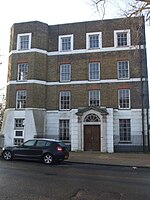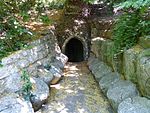The Wick
EngvarB from July 2020Grade I listed buildings in the London Borough of Richmond upon ThamesGrade I listed houses in LondonHistory of the London Borough of Richmond upon ThamesHouses completed in 1775 ... and 3 more
Houses in the London Borough of Richmond upon ThamesPete TownshendRichmond, London

The Wick is a Grade I listed Georgian house in Richmond, Greater London, located at the corner of Nightingale Lane and Richmond Hill. The house, designed in 1775 by architect Robert Mylne for Lady St. Aubyn, was for many years the family home of actor Sir John Mills, who sold it to Ronnie Wood of the rock band Faces (and later of the Rolling Stones) in 1971. From 1996 it was owned by Pete Townshend of the Who who sold it in 2021 for £15,000,000
Excerpt from the Wikipedia article The Wick (License: CC BY-SA 3.0, Authors, Images).The Wick
Nightingale Lane, London Petersham (London Borough of Richmond upon Thames)
Geographical coordinates (GPS) Address Nearby Places Show on map
Geographical coordinates (GPS)
| Latitude | Longitude |
|---|---|
| N 51.45162 ° | E -0.298154 ° |
Address
Nightingale Lane
Nightingale Lane
TW10 6UZ London, Petersham (London Borough of Richmond upon Thames)
England, United Kingdom
Open on Google Maps









